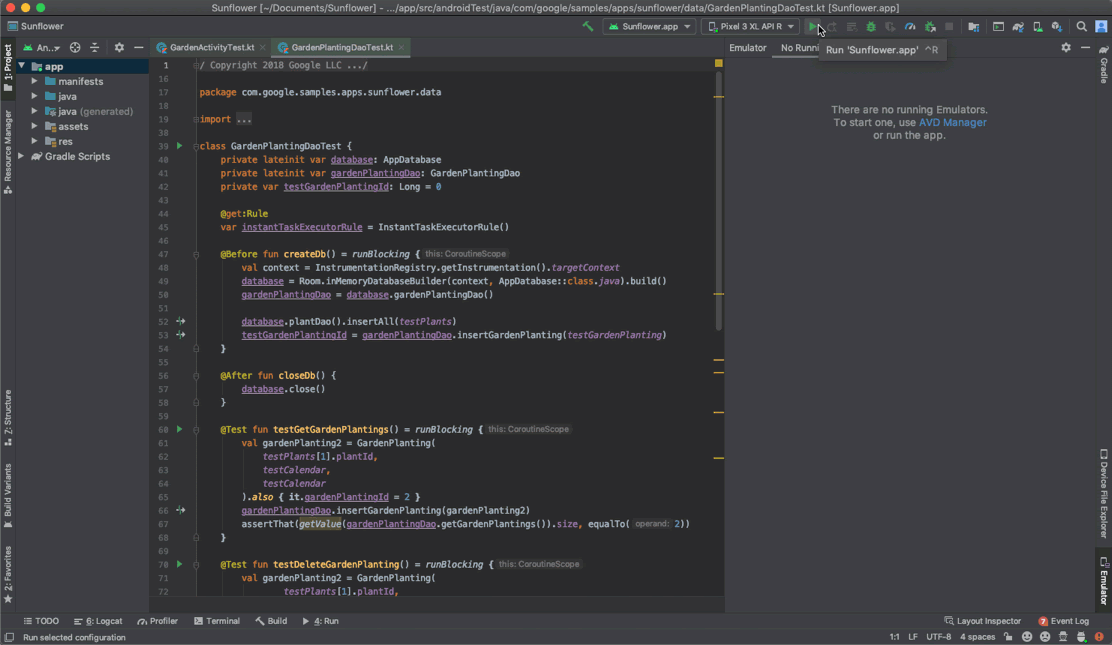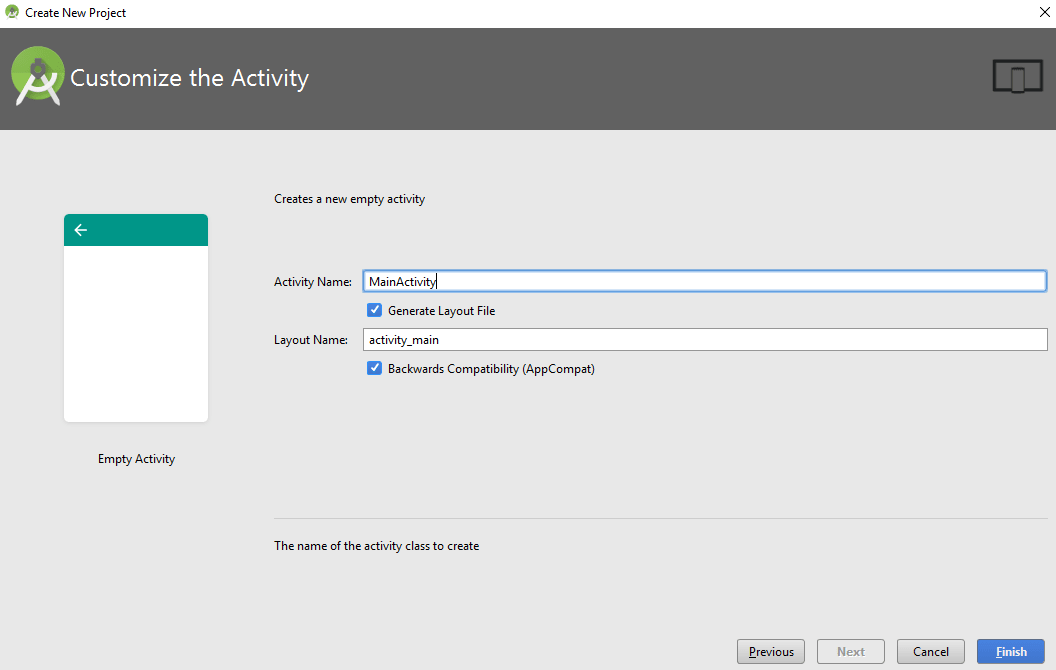
- #ANDROID STUDIO UPDATE VALUES IN PREVIOUS ACTIVITY HOW TO#
- #ANDROID STUDIO UPDATE VALUES IN PREVIOUS ACTIVITY ANDROID#
- #ANDROID STUDIO UPDATE VALUES IN PREVIOUS ACTIVITY CODE#
Do note, that in order for a View’s state to be saved it MUST have an android:id attribute because this is essentially used as the key for that particular View’s state.Īnother option in an Activity is to implement onRestoreInstanceState which also gets passed a savedInstanceState Bundle. This also means that if you use any custom Views, they should contain an implementation of onSaveInstanceState.
#ANDROID STUDIO UPDATE VALUES IN PREVIOUS ACTIVITY ANDROID#
Most of the time you don’t have to worry about saving the state of your Views because Android automatically calls the View.onSaveInstanceState method on each of the views in your view hierarchy as long as you call through to the super method in onSaveInstanceState. In most cases this involves implementing the onSaveInstanceState method (this could be in your Activity, Fragment or both) and placing the values you need to save in the Bundle argument that gets passed to the method. The most important aspect of handling orientation changes is saving state. While there are certainly situations in which this is the desired behavior, you should, if possible, allow your app to be used in both landscape and portrait orientations because it greatly increases your app’s usability. So if you rotate your device the screen won’t rotate with it. This altogether prevents orientation changes from happening while the user is in the Activity with the flag set. There is one situation in which retaining a Fragment is a good idea and we’ll explore that in more detail in the Handling AsyncTasks section.įinally, another “solution” to the orientation change problem is to set the android:screenOrientation flag on your activity: Calling setRetainInstance(true) on a Fragment is generally a bad idea for the same reasons as using the configChanges flag on an Activity is a bad idea: you won’t be able to reload resources that may need to be refreshed. Alternatively, if your Activity HAS the configChanges flag set and your Fragment IS retained, all that will happen is the screen will rotate and both your Activity and Fragment will receive calls to their respective onConfigurationChanged methods. Android will call all of the other callbacks because the Fragment’s parent Activity IS being destroyed and recreated, so the Fragment does have to go through the process of being detached then reattached.

Notice that Android does not call onCreate and onDestroy because we retained the Fragment nor does it call the constructor, because the same Fragment instance will be used after the orientation change. If you rotate your device when you have an Activity that is NOT using the configChanges flag and a Fragment that IS being retained, the following lifecycle methods will be called on the Fragment: onPause onSaveInstanceState onStop onDestroyView onDetach onAttach onCreateView onActivit圜reated onStart onResume It signals to Android that you want to continue using the same instance of the current Fragment, so all of your member variables will remain untouched. Without the configChanges flag you can use different layouts in landscape and portraitĬalling setRetainInstance(true) on a Fragment is similar to setting the android:configChanges flag on an Activity. You can do this by setting the android:configChanges flag on your Activity in AndroidManifest.xml as shown below:

One of the most common “solutions” to dealing with orientation changes is to not deal with them. While it may seem a bit tedious to implement, handling orientation changes properly provides you with several benefits: you will be able to easily use alternate layouts in portrait and landscape orientations, and you will be able to handle many exceptional states such as low memory situations and interruptions from incoming phone calls without any extra code. Proper handling of orientation changes centers around saving this state and also avoiding memory leaks. To work around this, Android gives you the opportunity to save your app’s state before destroying your Activities and Fragments, and the opportunity to restore your state when recreating them. When it destroys your Activities and Fragments it will end up creating new instances of them which will wipe out all of your member variables.

Android does this so that your application can reload resources based on the new configuration. Import 7.widget.When you rotate your device and the screen changes orientation, Android usually destroys your application’s existing Activities and Fragments and recreates them. Import 4.content.pm.ShortcutManagerCompat
#ANDROID STUDIO UPDATE VALUES IN PREVIOUS ACTIVITY CODE#
Step 3 − Add the following code to src/MainActivity.java

In the above code, we have taken recycerview. Step 2 − Add the following code to res/layout/activity_main.xml. Step 1 − Create a new project in Android Studio, go to File ⇒ New Project and fill all required details to create a new project.
#ANDROID STUDIO UPDATE VALUES IN PREVIOUS ACTIVITY HOW TO#
This example demonstrate about How to update RecyclerView Adapter Data


 0 kommentar(er)
0 kommentar(er)
